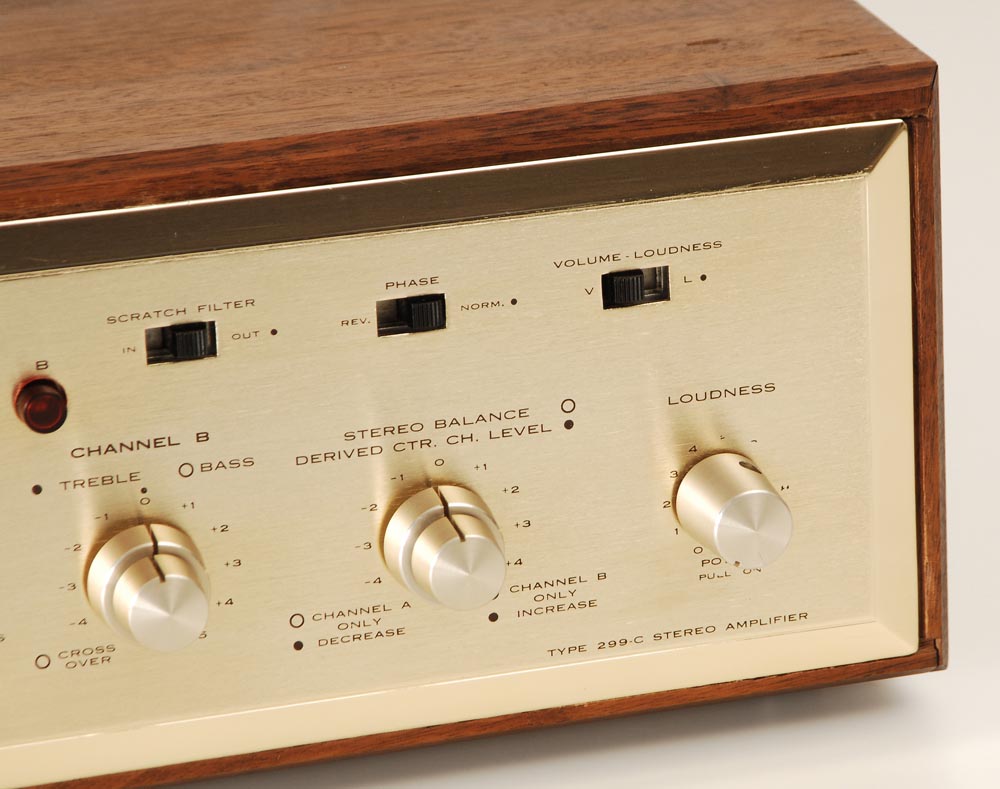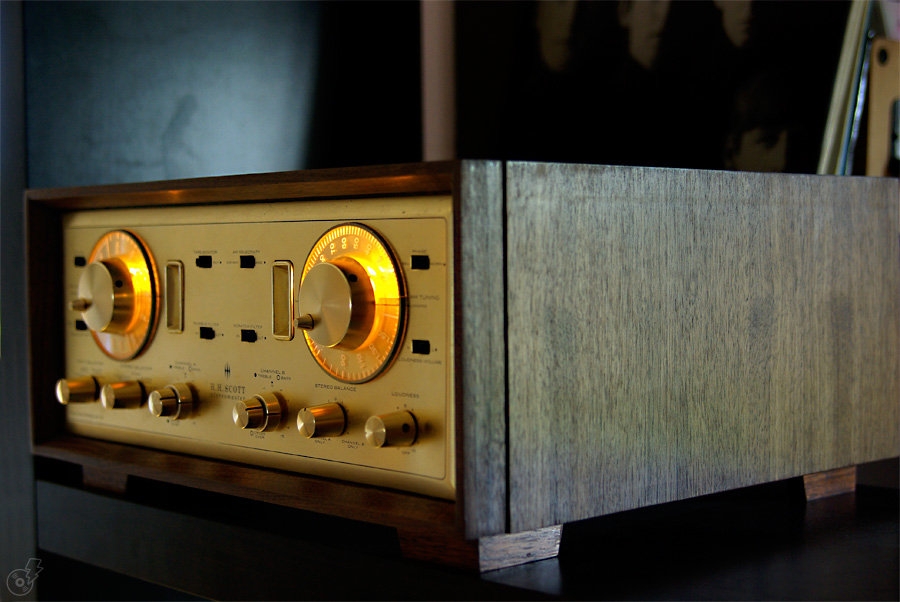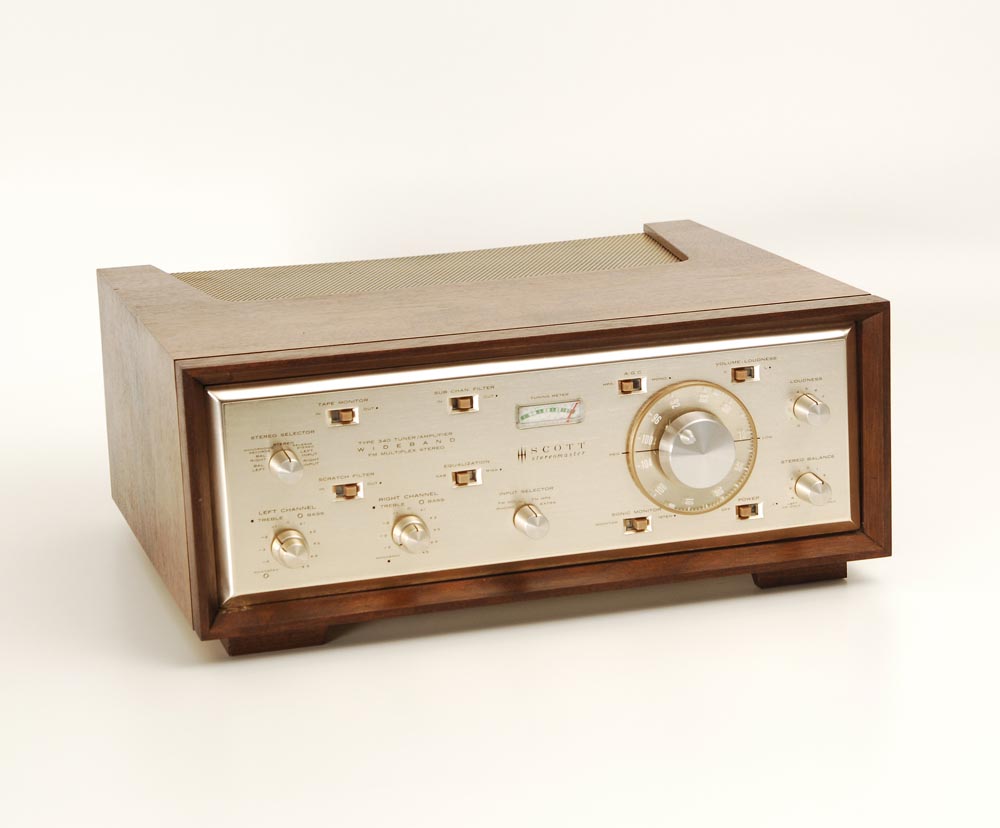

A higher supply voltage permits a larger a.c. sine wave approaches zero volts at the crossover. signal through the 70 volts supplied with a crossover at 35 volts. Two transistors operate across the three rails, and the transistor that carries current from the high to the intermediate rail pulls its source of ground through the transistor that carries current from the signal rail to ground. In a quasi-complementary design, the signal rail operating voltage is one half the value of the d.c. In the 4 ohm position, the amplifier's input sensitivity is attenuated by reducing resistance in the negative feedback loop. A rear panel mounted switch selects between 8-16 ohms and 4 ohms. This is sufficient to permit the amplifier to dissipate 30 watts of sine wave energy into an electrodynamic loudspeaker at 8 ohms with a 'theoretical' frequency response that extends to twenty hertz. The intermediate, signal rail carries 35 v.d.c which is blocked at the amplifier's output by a 2000 mfd electrolytic capacitor. to the uppermost of two rails that sit atop the ground rail.

The 260's power amplifier is a quasi-complementary design. The final design was introduced in the 344A and the 348, in mid 1965. The 260 was the second application of the 344 circuit, and was an intermediate step in the evolution of an amplifier circuit that became the penultimate design for higher power Scott units until the introduction of complementary designs in 1969. The 344 had no circuit boards and resembled audion amplifiers in that respect, and was the last audio component to be issued by Scott that had point to point wiring. It had little in common with its predecessor, the transformer coupled 4270 amplifier that was manufactured in 1963, but much to do with the 344 receiver that was first marketed in the fall of 1964. The Stereomaster 260 was the first all-silicon, capacitively coupled solid state amplifier to be introduced as a consumer item by Scott. Very nice Scott 260 Amp for light re-conditioning or parts. But thats the only testing i was able to do. looks to be in great condition, all knobs and switches work good ( missing a couple of the gold caps that go no knobs), checked fuses (all good), cabinet & chrome face (nice), Amp powers up great. If shipping is less than the $150 quoted I will refund the difference.Vintage H H Scott Stereomaster 260 Power Amplifier in nice condition. One for the unit and one for the wooden case and the tubes. This will be shipped in two separate and double-boxed boxes.

receiver.htm then scroll down to the 380. If you'd like to find out more technical information check out this web site: You won't find another in this condition and all the extras I am including make this a real deal. These are very well regarded, highly collectible and hard to find units. The knob is stuck in the ON position, I use a Voltage optimizer to turn it off and on. I will also include the Voltage Optimizer, so that you can optimize the voltage coming out of your wall into the unit and maximize the life of your tubes.ĭo your research. Everything works as it should except the on/off knob. It also comes with a brand new and custom made wooden case that really sets off the beautiful gold tone face plate.

#Scott stereo master driver
It is in excellent condition, with many of the original Telefunken 12AX7 driver tubes still testing strong and functioning perfectly. I have been using this unit as the cornerstone in my personal stereo system now for over a year. This will bring you joy each and every time you sit and listen to it and enjoy the vintage look and vibe it gives off. it didn't need it! This is an incredibly stable and enjoyable piece of audio history. When I took the receiver out of its beautiful wooden case to take additional internal pictures, I thought I'd check and reset the bias. DIDN'T GET WHAT YOU WANTED FOR CHRISTMAS? - This model from the HH Scott line of high-quality tube receivers from the golden age of stereo is a rare find - and would make a memorable addition to your collection.


 0 kommentar(er)
0 kommentar(er)
